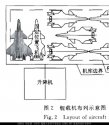You are using an out of date browser. It may not display this or other websites correctly.
You should upgrade or use an alternative browser.
You should upgrade or use an alternative browser.
J-20 5th Gen Fighter Thread V
- Thread starter Deino
- Start date
- Status
- Not open for further replies.
asif iqbal
Banned Idiot
J20 is long range deep strike
J31 is multi role smaller frame
J31 is multi role smaller frame
When that baby comes out, I will definitely get it and replace my existing J-20 "2001" model by TrumpeterSeems as if Trumpeter has its revised kit of the J-20 '201x'-preserials finished
Deino



The length of the fuselage suggest a high premium is placed on low supersonic drag. The extra canard suggests not so much. Which is it? A fast super cruiser or a only somewhat stealthy airframe with some weight distribution problems?RaibbowBear (BaiWei)draw this new CG base on the old Snowy owl design and research paper and call it the Sea owl.
View attachment 21424 View attachment 21425 View attachment 21427 View attachment 21428View attachment 21429
The length of the fuselage suggest a high premium is placed on low supersonic drag. The extra canard suggests not so much. Which is it? A fast super cruiser or a only somewhat stealthy airframe with some weight distribution problems?
What did you mean by extra canards?
Canards are actually rather optimal for supersonic drag...because they're better trim devices at supersonic speeds than tails are (aerodynamic center shifts rearwards at supersonic speeds).The length of the fuselage suggest a high premium is placed on low supersonic drag. The extra canard suggests not so much. Which is it? A fast super cruiser or a only somewhat stealthy airframe with some weight distribution problems?
Engineer
Major
New comers should read this regarding J-20 aerodynamics characteristics.The length of the fuselage suggest a high premium is placed on low supersonic drag. The extra canard suggests not so much. Which is it? A fast super cruiser or a only somewhat stealthy airframe with some weight distribution problems?
New comers should read this regarding J-20 aerodynamics characteristics.
I think he was referring to the Snowy Owl design.
Engineer
Major
Ah, I see. Nevertheless, design criteria is still the same, as the two projects were competitors. SAC went with triplane design to specifically address PLAAF's requirement of controlability up to 60 ° AOA.I think he was referring to the Snowy Owl design.
It's interesting how they came to their different design decisions. CAC decided to challenge itself with the FCS to reduce the number of compromises they had to make, while SAC ended up going with a more conservative approach.Ah, I see. Nevertheless, design criteria is still the same, as the two projects were competitors. SAC went with triplane design to specifically address PLAAF's requirement of controlability up to 60 ° AOA.
- Status
- Not open for further replies.




